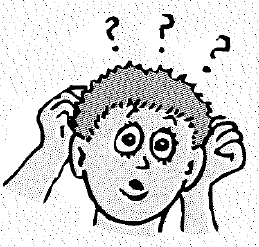
Concept explainers
Does Einstein’s theory of gravitation invalidate Newton’s theory of gravitation? Explain.

To explain: Whether Einstein’s theory of gravitation invalidate Newton’s theory of gravitation or not.
Explanation of Solution
Introduction:
One of the best outcomes from the scientific world in 16th to 17th century is the discovery of gravity. Among various natural phenomenon, gravity is the milestone in the history of science. Every massive body connected to another massive body through the force of gravity. Gravity plays its role from stability of the human on the surface of the earth to the formation of the stars, in the universe.
In 1687, Newton discovered the universal gravitational law. According to Newton, force which keeps planet revolving around the sun is inversely proportional to the square of the distance between planet and sun. Mathematically it can be expressed as,
Where, M1and M2are the masses of the objects and r be the distance between them. Newton clearly explained the motion of planet, object moving on the earth’s surface and many more. But description of shifting of mercury’s orbit cannot explained by the Newton. Orbit of the mercury around the sun makes the discrepancy in Newton’s law. The problem related to this Mercury’s orbit solved by the Einstein’s general theory of relativity in 1915. According to Einstein, not gravity but space-time curvature around the object makes well shape. In that well shape, objects even light also fall. This Einstein’s view of gravity solves the problem of mercury. Due to the simplicity of the Newton’s law of gravity, many of the problem can be solved by simply Newton’s laws of gravity. When the speed of the body is comparable to speed of light, Newton’s law cannot hold more. In that case, relativity theory works very well.
Conclusion:
Therefore, the Newton’s law of gravity is the natural phenomenon where many of the problems can be solved with this theory. But when the speed of the object reaches to the speed of the light, Newton’s law replaced with the Einstein’s theory of the gravity. So, Einstein’s theory of gravitation not invalidate the Newton’s theory of gravity.
Chapter 16 Solutions
Conceptual Physics: The High School Physics Program
Additional Science Textbook Solutions
Organic Chemistry (8th Edition)
Biology: Life on Earth (11th Edition)
Microbiology: An Introduction
Brock Biology of Microorganisms (15th Edition)
Introductory Chemistry (6th Edition)
College Physics: A Strategic Approach (3rd Edition)
- Consider a rubber rod that has been rubbed with fur to give the rod a net negative charge, and a glass rod that has been rubbed with silk to give it a net positive charge. After being charged by contact by the fur and silk...? a. Both rods have less mass b. the rubber rod has more mass and the glass rod has less mass c. both rods have more mass d. the masses of both rods are unchanged e. the rubber rod has less mass and the glass rod has mroe massarrow_forward8) 9)arrow_forward10) 11) 12) 13) 14) 15)arrow_forward
- Mick and Rick are twins born on Earth in the year 2175. Rick grows up to be an Earth-bound robotics technician while Mick becomes an intergalactic astronaut. Mick leaves the Earth on his first space mission in the year 2200 and travels, according to his clock, for 10 years at a speed of 0.75c. Unfortunately, at this point in his journey, the structure of his ship undergoes mechanical breakdown and the ship explodes. How old is Rick when his brother dies?arrow_forwardHi, I have canceled, why did you charge me again?arrow_forwardNo chatgpt pls will upvotearrow_forward
 College PhysicsPhysicsISBN:9781305952300Author:Raymond A. Serway, Chris VuillePublisher:Cengage Learning
College PhysicsPhysicsISBN:9781305952300Author:Raymond A. Serway, Chris VuillePublisher:Cengage Learning University Physics (14th Edition)PhysicsISBN:9780133969290Author:Hugh D. Young, Roger A. FreedmanPublisher:PEARSON
University Physics (14th Edition)PhysicsISBN:9780133969290Author:Hugh D. Young, Roger A. FreedmanPublisher:PEARSON Introduction To Quantum MechanicsPhysicsISBN:9781107189638Author:Griffiths, David J., Schroeter, Darrell F.Publisher:Cambridge University Press
Introduction To Quantum MechanicsPhysicsISBN:9781107189638Author:Griffiths, David J., Schroeter, Darrell F.Publisher:Cambridge University Press Physics for Scientists and EngineersPhysicsISBN:9781337553278Author:Raymond A. Serway, John W. JewettPublisher:Cengage Learning
Physics for Scientists and EngineersPhysicsISBN:9781337553278Author:Raymond A. Serway, John W. JewettPublisher:Cengage Learning Lecture- Tutorials for Introductory AstronomyPhysicsISBN:9780321820464Author:Edward E. Prather, Tim P. Slater, Jeff P. Adams, Gina BrissendenPublisher:Addison-Wesley
Lecture- Tutorials for Introductory AstronomyPhysicsISBN:9780321820464Author:Edward E. Prather, Tim P. Slater, Jeff P. Adams, Gina BrissendenPublisher:Addison-Wesley College Physics: A Strategic Approach (4th Editio...PhysicsISBN:9780134609034Author:Randall D. Knight (Professor Emeritus), Brian Jones, Stuart FieldPublisher:PEARSON
College Physics: A Strategic Approach (4th Editio...PhysicsISBN:9780134609034Author:Randall D. Knight (Professor Emeritus), Brian Jones, Stuart FieldPublisher:PEARSON





